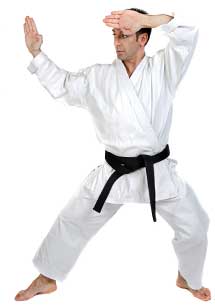
Modern Karate is often unrealistic.
Either you can’t use certain techniques, or you can’t strike certain targets, or you obsess over “form” (rather than FUNCTION).
That’s why I often travel to Okinawa – the birthplace of Karate.
Sadly, the reverse influence of modern Karate has forced many dojos to change their ways. The art is becoming a sport… even in Japan.
For this reason, I’ve had to seek out many different grandmasters to collect as much knowledge as possible before its lost forever.
That’s why I’ve discovered something highly unusual.
On my last trip to Okinawa, 3 different grandmasters in 3 different dojos taught me one exercise that was *identical*. Yet they all claimed it was unique to “their style”.
This means the exercise must have been handed down from ancient times, before Karate was divided into different styles.
But here’s the crazy part… this exact same exercise is also practiced in a Filipino martial art named Kali.
To learn more, I decided to meet an expert!



14 Comments